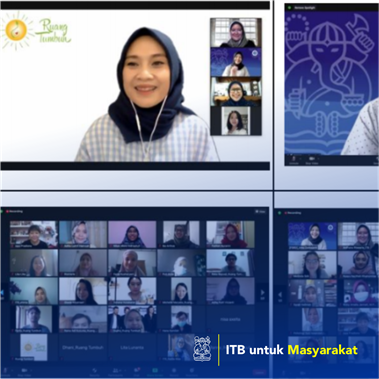

Ardhana Riswarie
The research group was approached by Ruang Tumbuh, a psychological clinic under Yayasan Dharma Dirga Husada Jakarta, that also focuses on play therapy treatments. Besides providing treatments and therapies, they build a network with other professionals (psychologists, psychiatrists, therapists, nurses, social workers, etc.) to support each other in capacity building. To increase the capacity of non-art-therapist practitioners in using art within the clinical context, a training was designed online, complying to the health protocols during pandemic. The aim of the training is to equip the non-art therapists with the confidence and ability to use art in their own clinical settings. Training for non-art therapists must strictly provide specific techniques that are easily applied, assessed, and not be confused with clinical art therapy/psychotherapy. Thus, the training is divided into 2 introduction sessions, with possible follow ups in the future, starting with the most familiar use of art vis-à-vis Perry’s sequence of engagement (2002), which are emotional regulation, containment/building relations, and meaning making/reasoning. The event was able to gather practitioners and gave proper insights on using art within their own clinical context. To provide more access for current participants as well as those in the future, a website was built: www.psikologiseni.com.
Penerapan Teknologi Tepat Guna, Penerapan Karya Tulis
Currently, the number of Indonesian art therapists grows rather slowly due to the unavailability of master level Art Therapy programs in Indonesia abiding to the main requirement by the consortium of international art therapists’ associations. On the other hand, there has been an increase in the interest of the use of art as therapy. This gap has triggered a question about how we can enable non-art therapists to use art within their clinical practice.